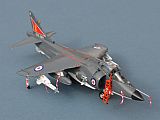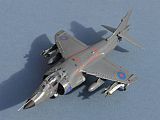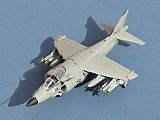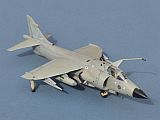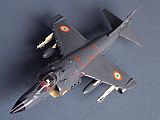Return to Fred's Models main index
FRS.1 - 800 Naval Air Sqn, HMS HERMES, 1981.
ESCI with Sky decals. And Pavla ejector seat Link to build page
The first Sea Harriers to serve at sea were 800 Sqn in 1980, initially onboard HMS INVINCIBLE, but quickly moving in 1981 to the newly refitted HMS HERMES with her steeper ramp, much larger deck and bigger hangar. Until the start of the Falklands war in 1982, when everything was toned down to shades of grey, the aircraft wore the traditional RN post war colour scheme of dark sea grey and white.
This aircraft also carries two AIM-9G Sidewinders. Much has been made of the US supplying all-aspect AIM-9L missiles to the RN in 1982, but subsequent analysis has shown that all but a very few shots were well within the 9G’s envelope, such that the advantage was more psychological than material.
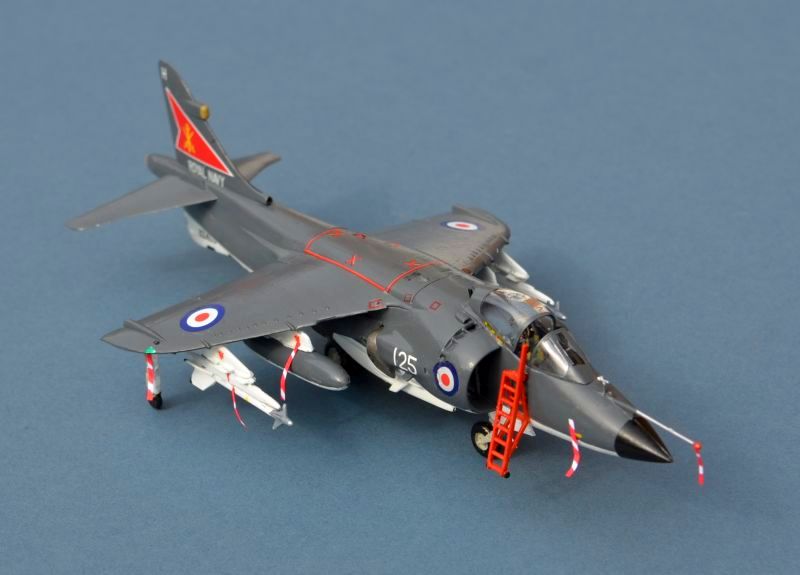
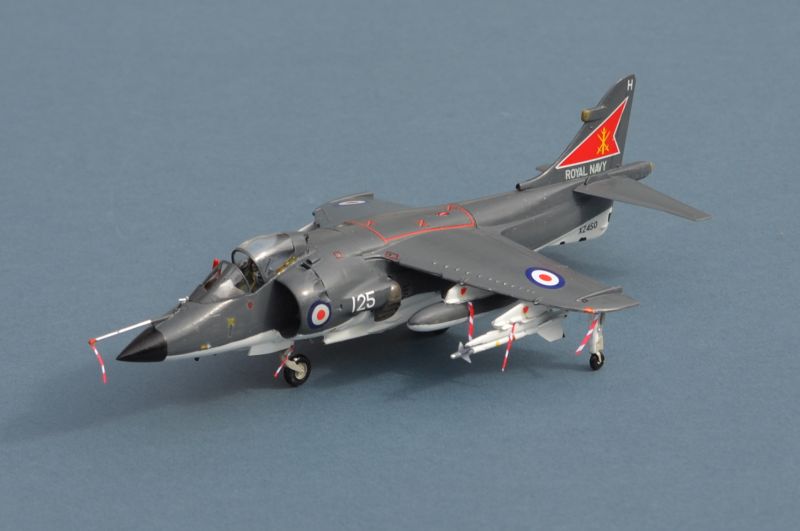
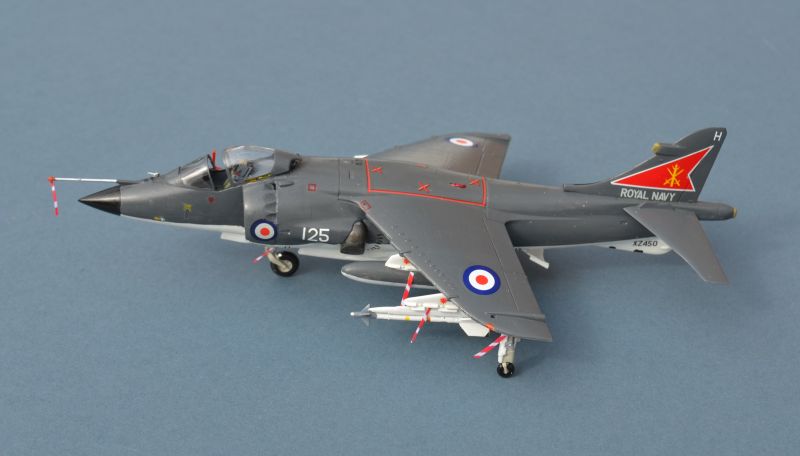
FRS.1 - 800/899 Naval Air Sqn, HMS HERMES, South Atlantic, 1982.
Hasegawa with scratch windscreen and twin pylon.
As the Falklands task Force sailed south in 1982, aircraft were repainted (in some cases by brush) and their national and squadron markings toned down. Although originally an 899 Sqn aircraft, this one was integrated with the HERMES Air Group under 800 Sqn.
Note the double sidewinder rails (not a success and discontinued after the war), kill markings and the white parts of the peacetime roundels overpainted in blue.
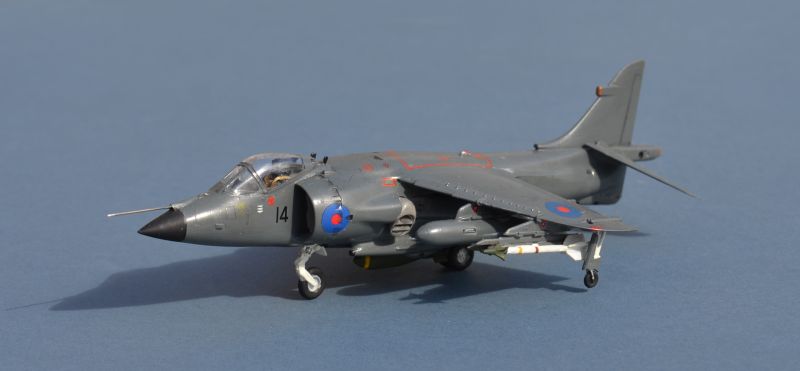
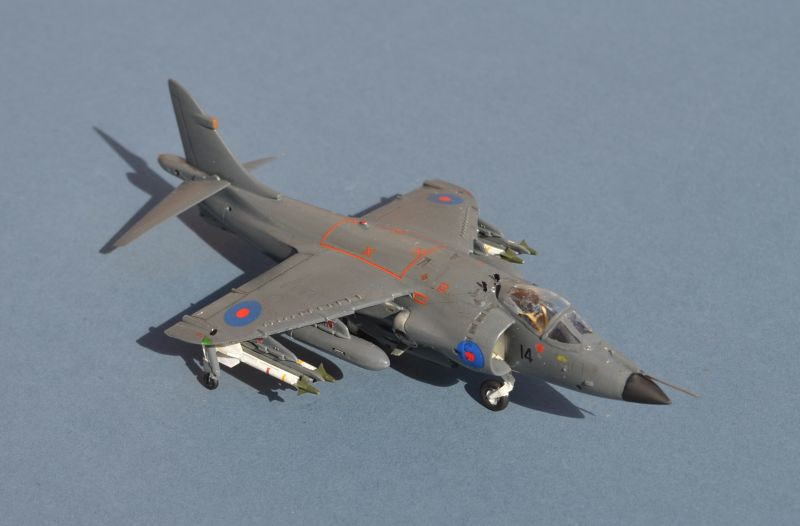
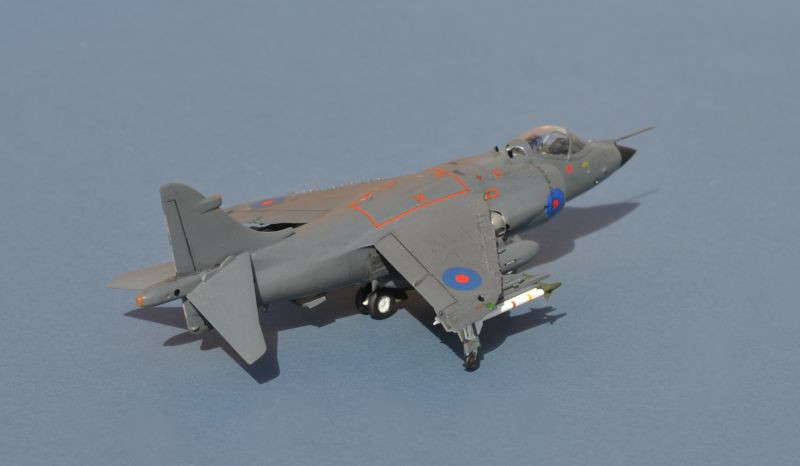
FRS.1 - 801 Naval Air Sqn, HMS INVINCIBLE, South Atlantic, 1982.
ESCI with Modeldecal decals. This was my first Sea Harrier model build, in 1984.
These markings reflect the immediate post Falklands period, when 801 Sqn re-applied simple squadron markings. Note the unusual side number of this aircraft, "000" and the standard proportion low visibility roundels. The Sea Eagle missile on the port inner pylon is a little out of time - none were deployed to the Falklands.
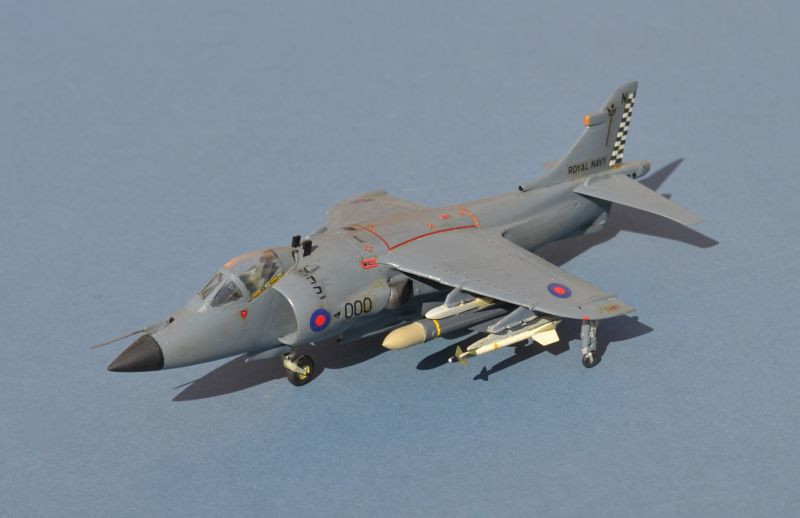


FRS.1 - 809 Naval Air Sqn, HMS ILLUSTRIOUS, South Atlantic, 1982.
ESCI with Hasegawa decals. Link to build page
These markings also reflect the immediate post Falklands period. 809 Sqn had been split between 800 and 801 (in the same way as 899 Sqn), but then reformed as a separate unit and returned to the UK onboard HMS HERMES after the Argentine surrender. After a quick maintenance turn-around, they redeployed back to the South Atlantic onboard the newly complete carrier HMS ILLUSTRIOUS, as relief for HMS INVINCIBLE which had remained in-theatre to provide air defence of the newly liberated islands whilst the Army made them safe for the RAF to deploy a more permanent defence.
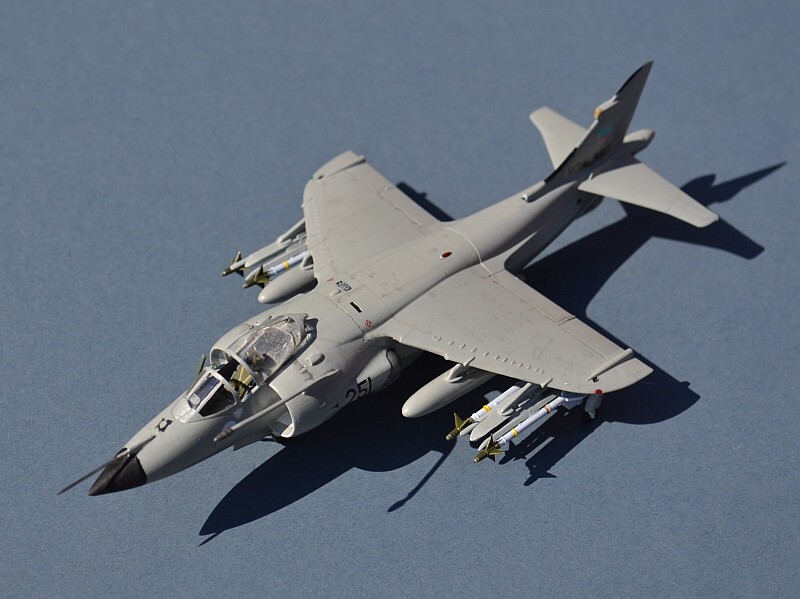
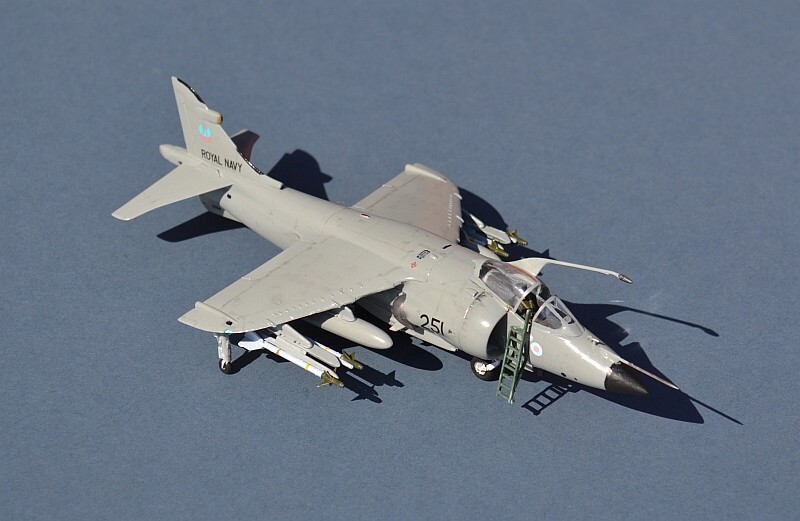
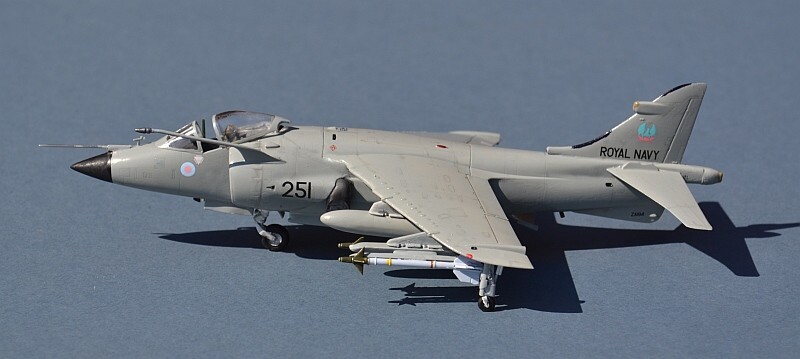
FRS.1 - 899 Naval Air Sqn, RNAS Yeovilton 1982.
ESCI out the box, with Hasegawa refuelling probe.
On return from the Falklands, 899 Sqn refrmed as a separate Headquarters unit at Yeovilton. The Medium Sea Grey topsides/Barley Grey undersides Air Superiority colour scheme for the FRS1 was relatively short lived, and was only applied to 809 & 899 Sqn aircraft during and immediately after the Falklands conflict. Nevertheless, 10 years later, an all-over MSG scheme would return as standard for the SHAR FA.2.


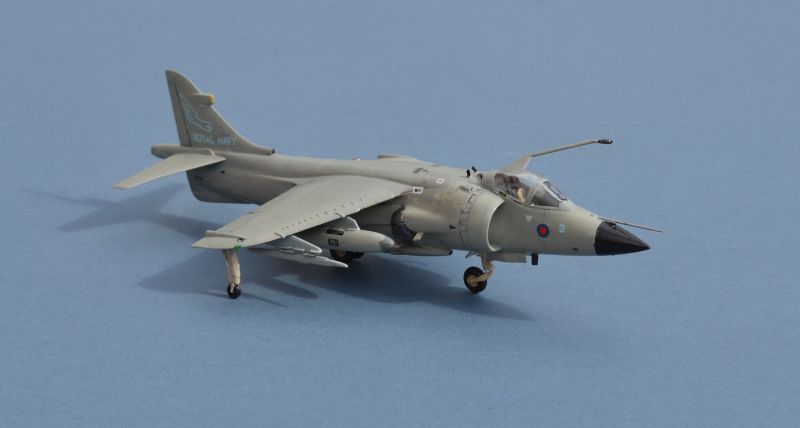
... And a link to a picture of the real thing: 899 Squadron SHAR
FRS.1 - 800 Naval Air Sqn, HMS ILLUSTRIOUS, 1984.
ESCI with Modeldecal decals. Link to build page
Following the war, the SHAR force settled on an overall Dark Sea Grey scheme, with toned down squadron markings and in these colours it saw action over Bosnia in the early 1990s (with one aircraft shot down). This particular aircraft survived the Falklands war, but crashed in 1984 in the Scottish Highlands, following a bird strike and engine fire. Fortunately there were no serious casualties.

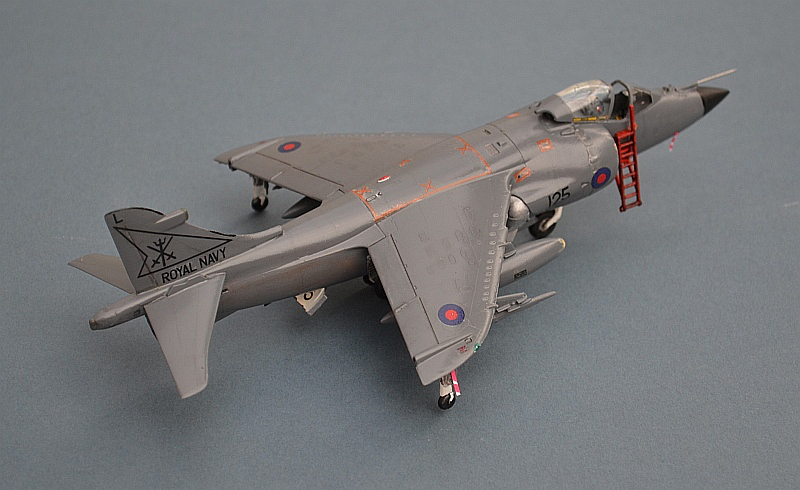
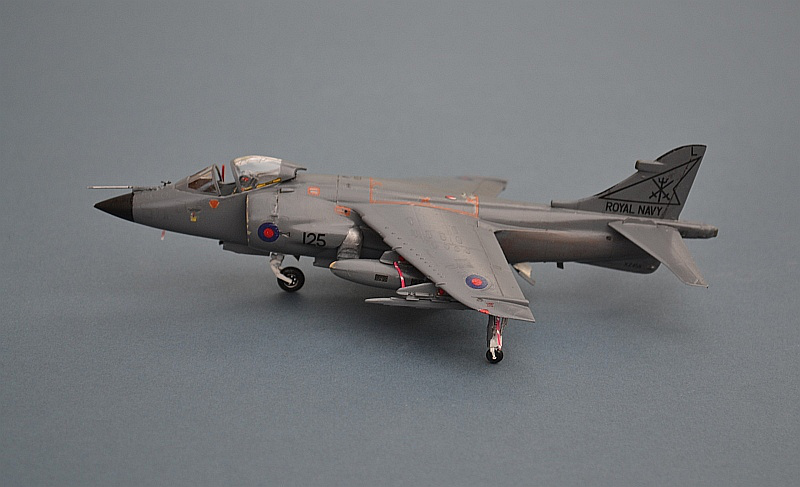
FRS.51 - 300 Sqn “White Tigers”, Indian Navy, INS VIKRANT 1983.
Fujimi with scratch canopy, Italeri Magics & Italeri decals.
The Indian Navy was the only other operator of the SHAR, flying them initially from the INS VIKRANT, then the (ex RN HMS HERMES) INS VIRAAT. Instead of Sidewinders, the French Matra R550 Magic missile was carried. This is the BAe delivery scheme; the english language "Navy" titles were subsequently repainted in Indian script on the starboard tail and the white tiger symbol moved to the nose.
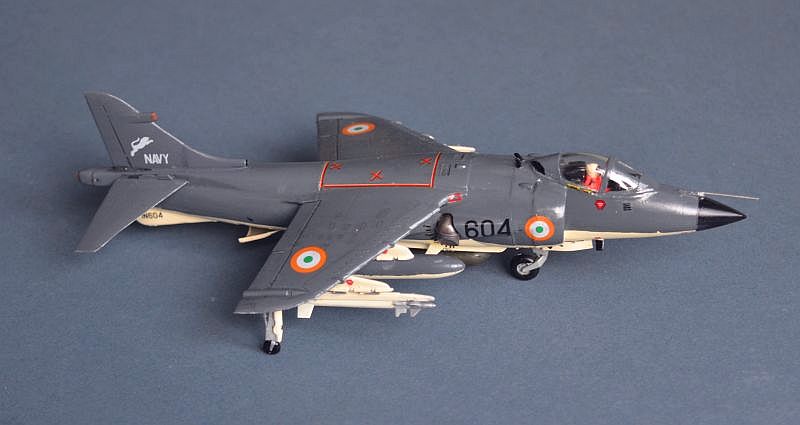
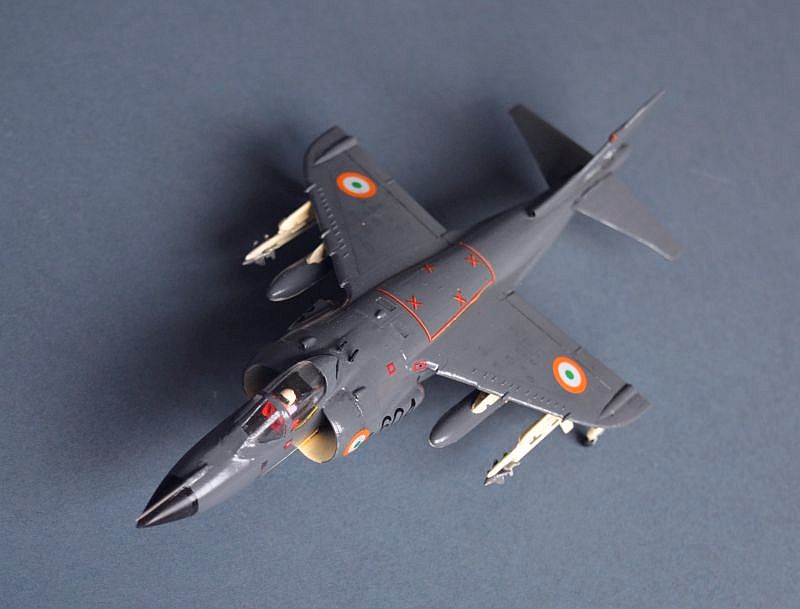
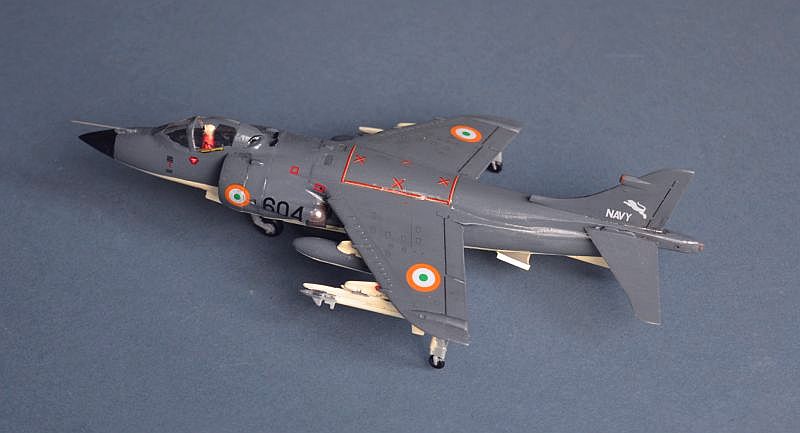
FRS.51 LUSH - 300 White Tiger Sqn, Indian Navy, INS VIRAAT 2016.
Fujimi with scratch Rafale Derby missiles, MBDA Magics & Italeri/spare/home made decals.
From 2007 onward a limited number of Indian SHARs were given an upgrade programme (LUSH - Limited Upgrade Sea Harrier) providing a new Israeli sourced Elta multimode pulse doppler radar, rearranged cockpit and the Rafale Derby BVR missile carried with a Magic on a twin wing pylon.
Despite this significant operational improvement, the SHAR’s days were clearly limited and with the arrival of the Indian Navy’s new carrier and its MiG 29s, the SHARs and the INS VIRAAT (ex HMS HERMES) were finally de-commissioned in May 2016, as the last of the amazing Sea Harrier family.
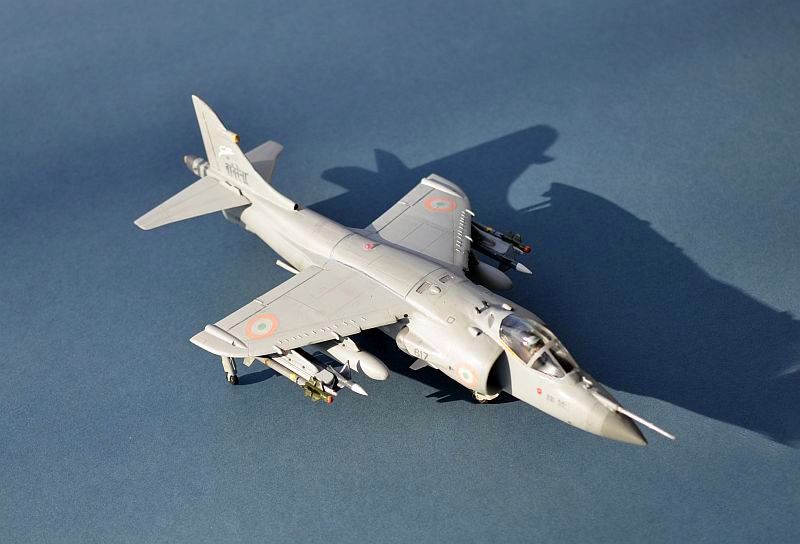
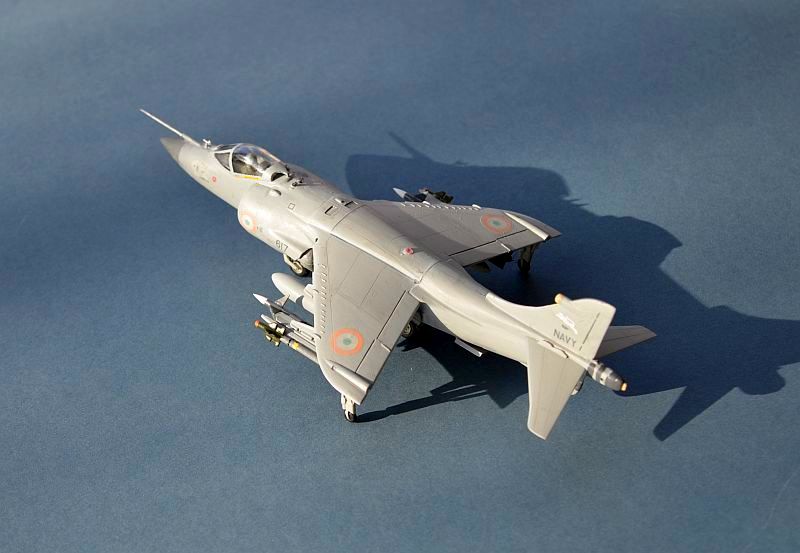
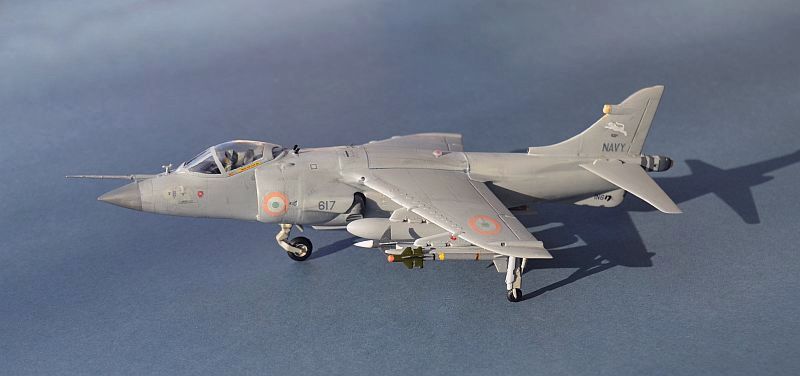
Sea Harriers - first and last:
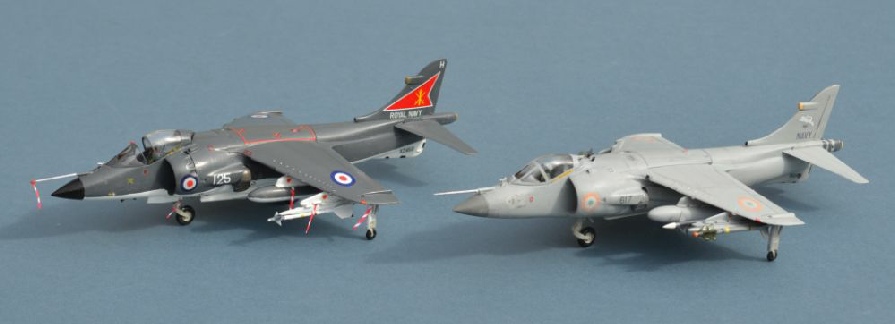
The SHAR was a difficult aircraft to fly, with high pilot workload adding to the stresses of operating over the sea. As a result, both the RAF and RN decided to introduce 2-seat training variants. For the RN , this was the T.4N, which was later converted into the T.8N to reflect the differences between SHAR1s and SHAR2s.
T.4N - 899 Naval Air Sqn, RNAS Yeovilton, Royal Navy. 2002.
Sword - built entirely out the box.
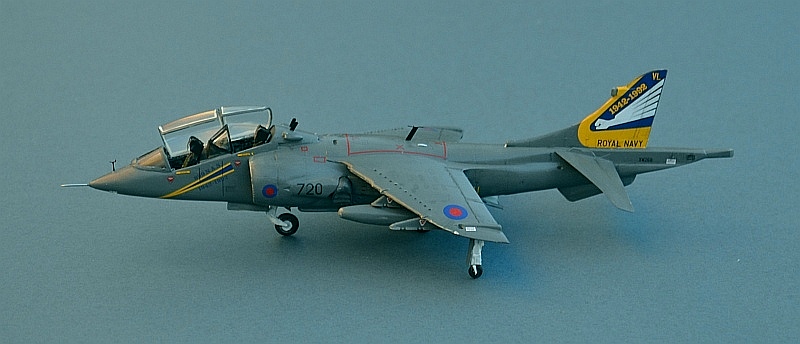
The Sea Harrier HQ Squadron at Yeovilton operated a small fleet of 2-seat Harrier T.4Ns for training purposes. In 1992, a Sea Harrier and a T.4N, were decorated to celebrate the 50th Anniversary of 899 Squadron's founding in 1942.
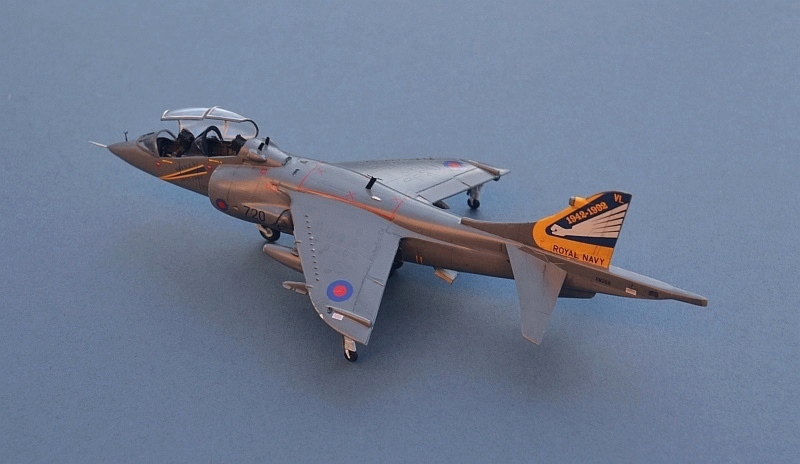
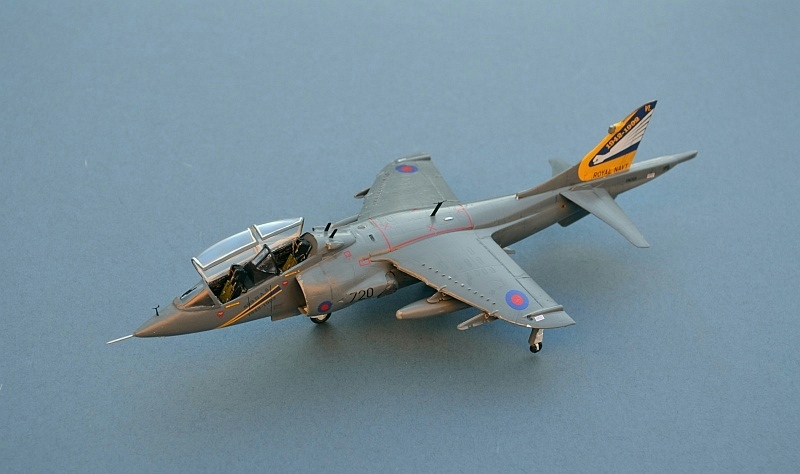
T.8N - 899 Naval Air Sqn, RNAS Yeovilton, Royal Navy. 2002.
Modified Heller Bobkit (putty nose & reprofiled wing tips/tail/boom with Model Alliance decals.
899 Sqn's Harrier T4s were subsequently upgraded with FA2-style cockpits to become the T.8N. Originally painted in Dark Sea Grey (with a dummy black nose radar) the T8Ns eventually adopted the standard UK high-viz Training scheme of overall gloss black.
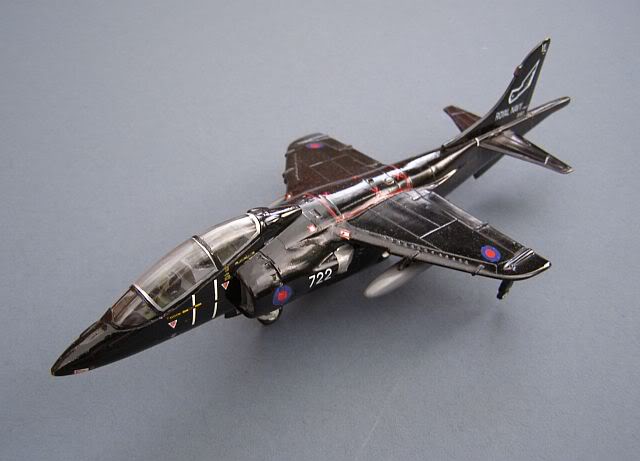
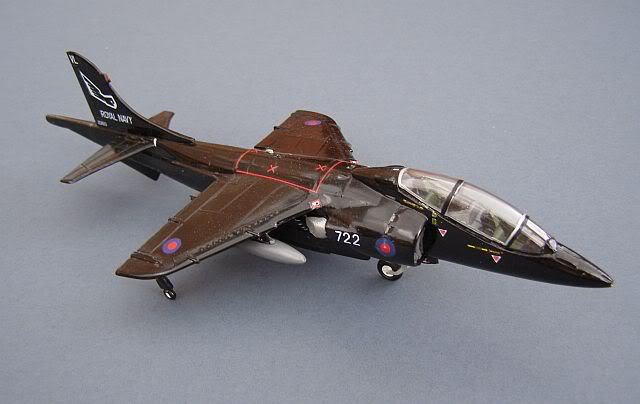
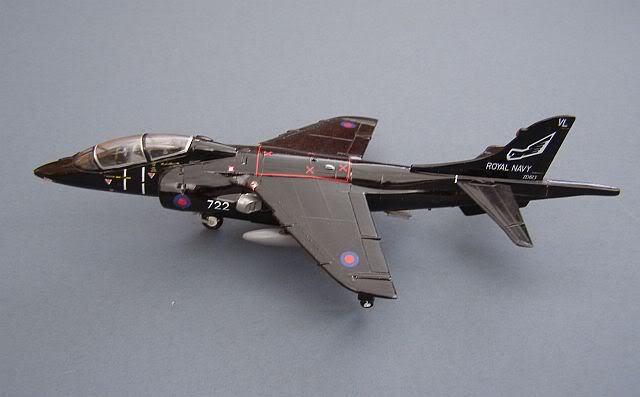
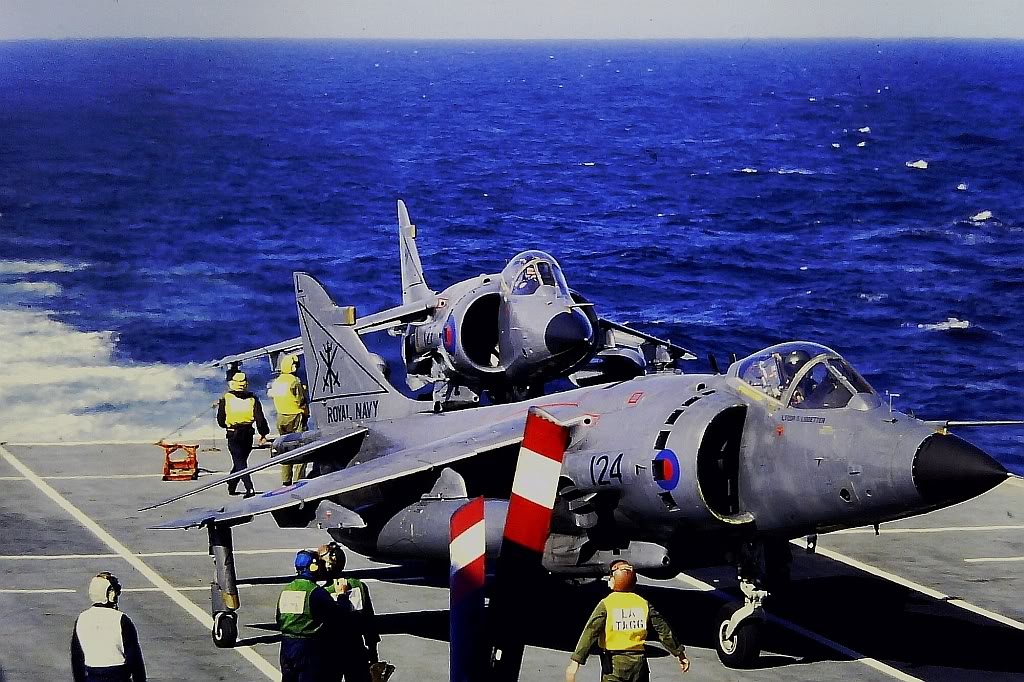
www.gengriz.co.uk

Sea Harriers - FRS.1, FRS.51, T.4N and T.8N
![]()
